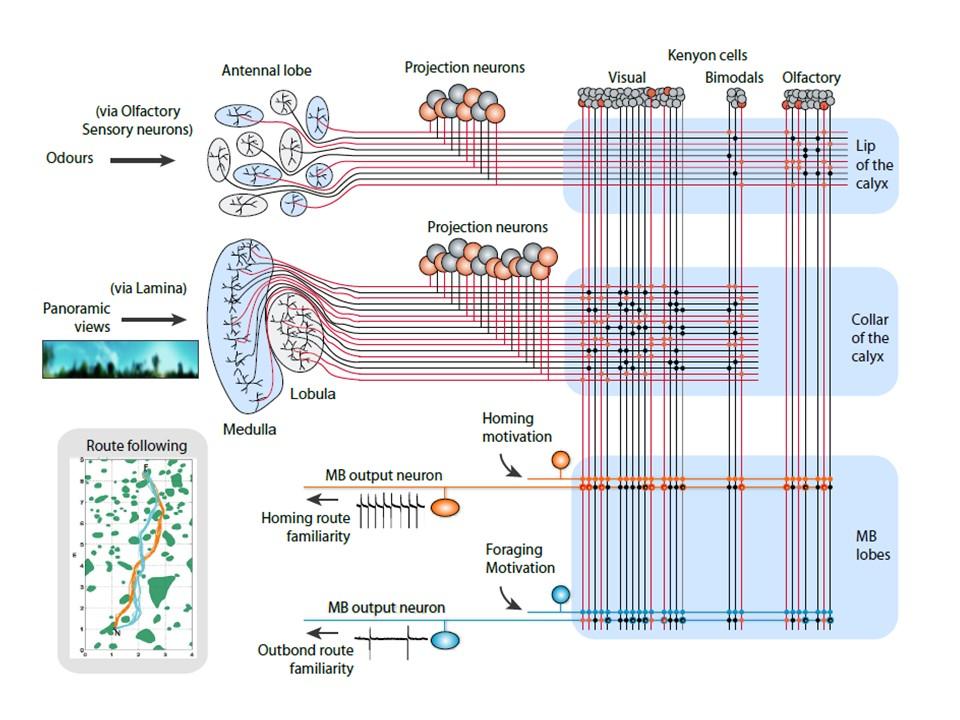Abstract:
Insect navigation has been a focus of behavioural study for many years, and provides a striking example of cognitive complexity in a miniature brain. We have used computational modelling to bridge the gap from behaviour to neural mechanisms by relating the computational requirements of navigational tasks to the type of computation offered by invertebrate brain circuits. We have shown that visual memory of multiple views could be acquired by associative learning in the mushroom body neuropil, and allow insects to recapitulate long routes. We have also proposed a circuit in the central complex neuropil that integrates sky compass and optic flow information on an outbound path and can thus steer the animal directly home. The models are strongly constrained by neuroanatomy, and are tested in realistic agent and robot simulations.

Biography:
Barbara Webb completed a BSc in Psychology at the University of Sydney then a PhD in Artificial Intelligence at the University of Edinburgh. Her PhD research on building a robot model of cricket sound localization established her as a pioneer in the field of biorobotics - using embodied models to evaluation biological hypotheses of behavioural control. She has published influential review articles on this methodology in Behavioural and Brain Sciences, Nature, Trends in Neurosciences and Current Biology.
Recently, the focus of her research has moved from basic sensorimotor control towards more complex insect behavioural capabilities, in the areas of associative learning and navigation. She has held lectureships at the University of Nottingham and University of Stirling before returning to a faculty position in the School of Informatics at Edinburgh in 2003. She was appointed to a personal chair as Professor of Biorobotics in 2010.
No need to book, just turn up!
